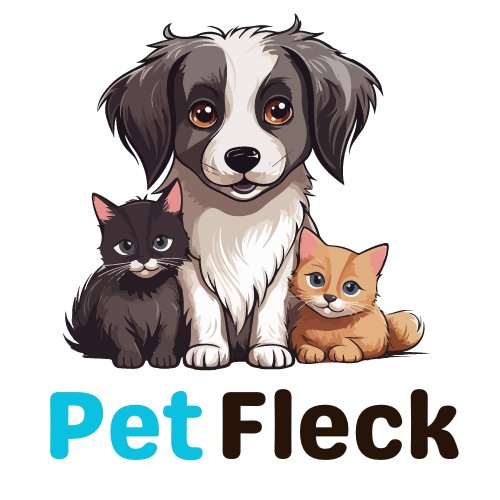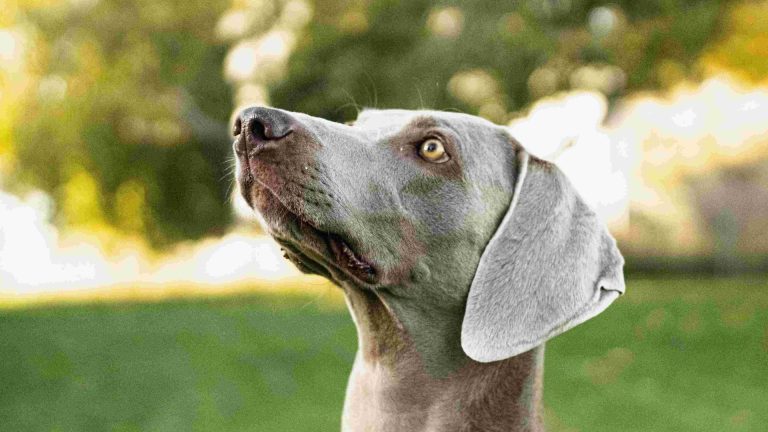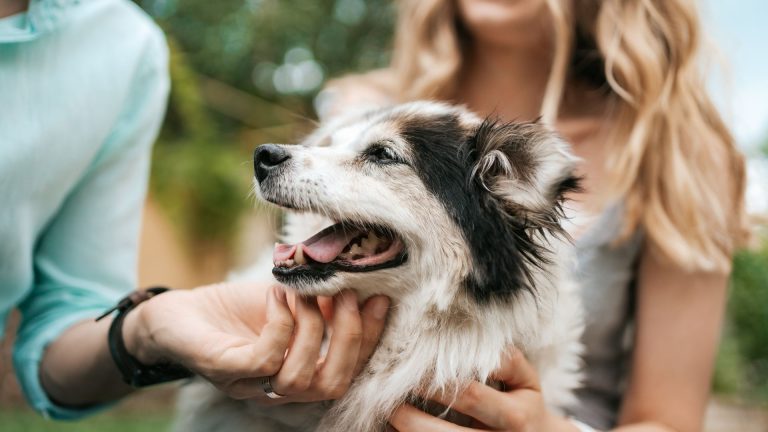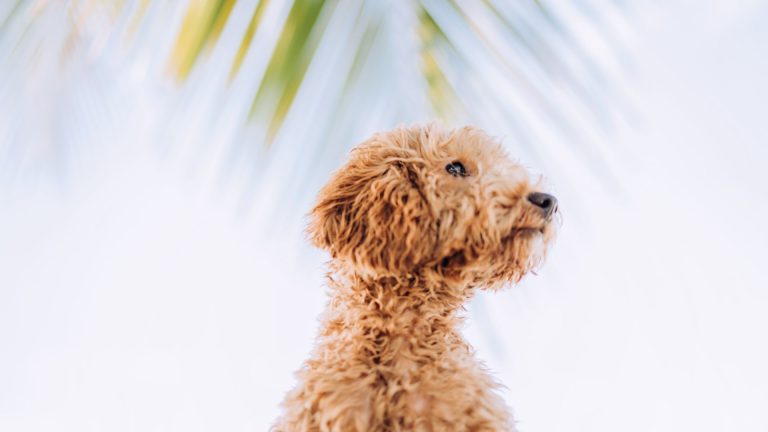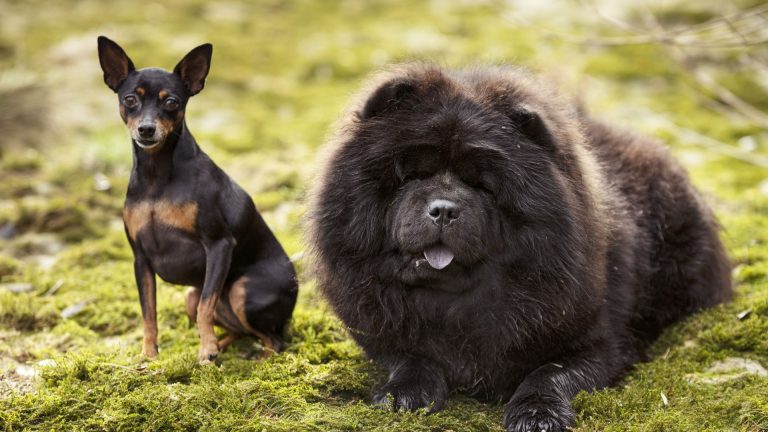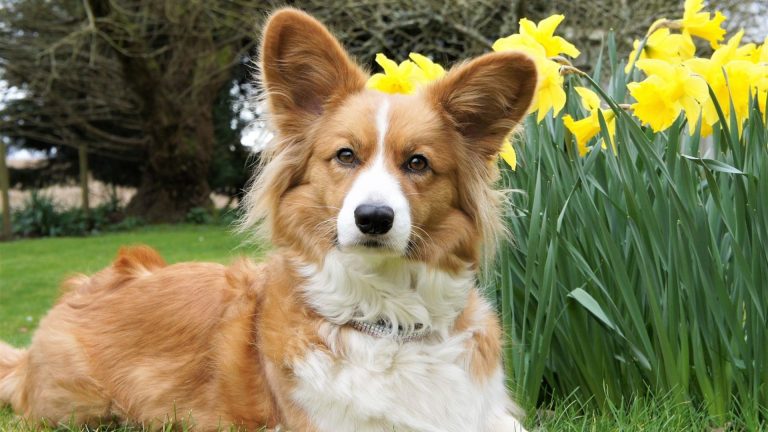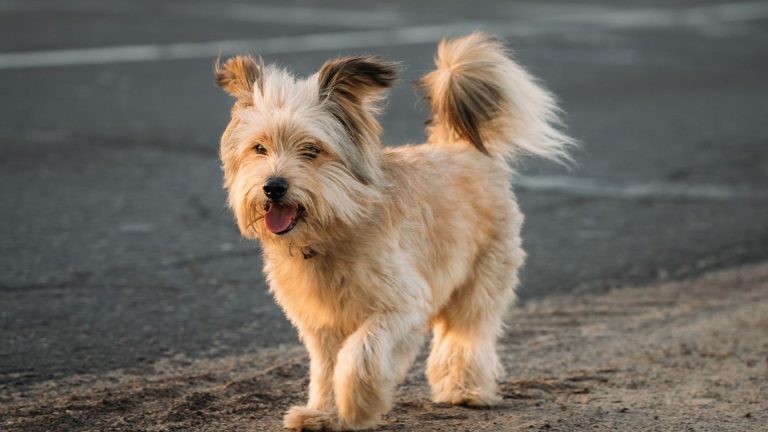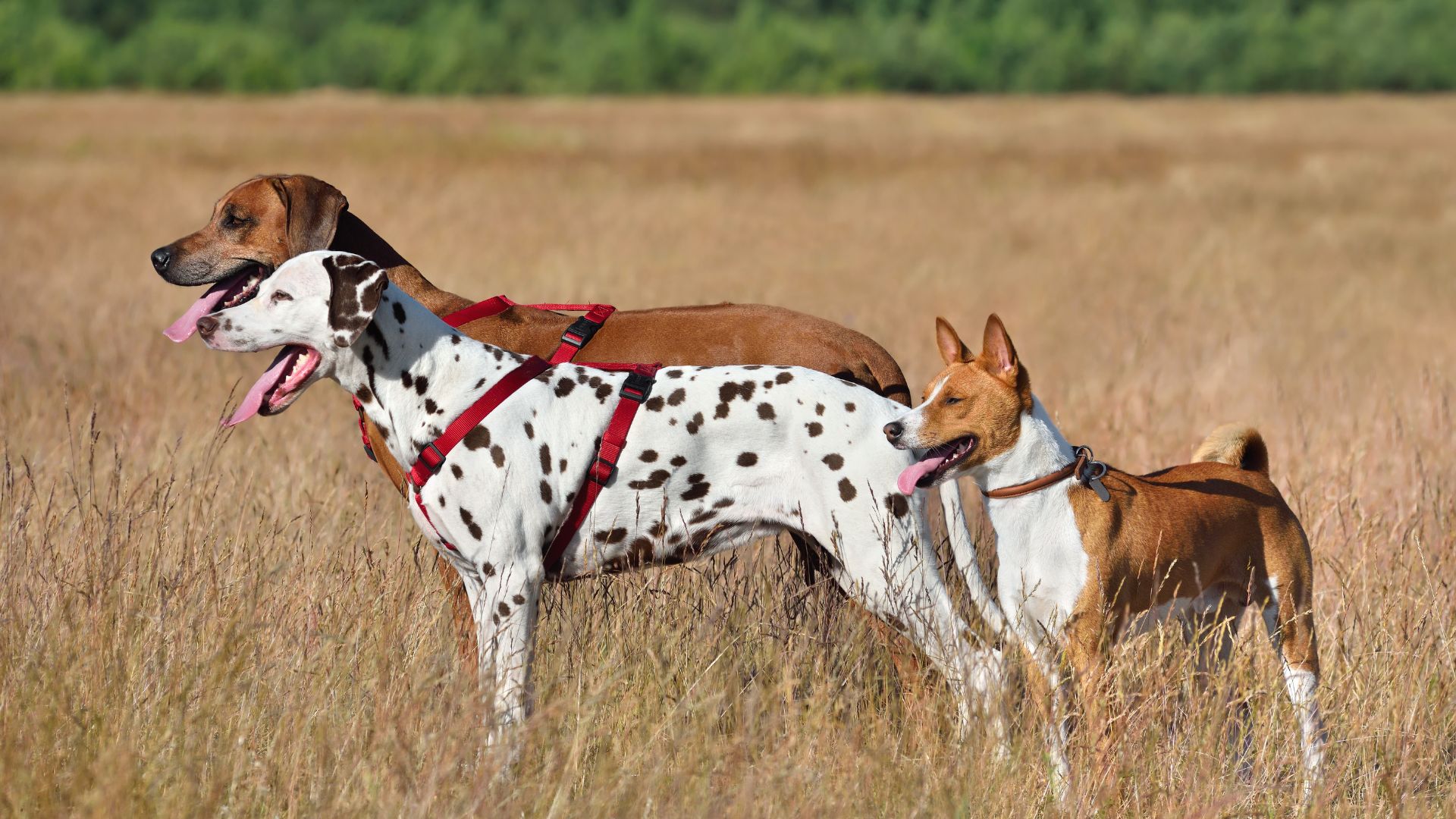
Contents
Dogs have always fascinated us with their diverse breeds and unique characteristics. Each breed brings something special, making the choice both exciting and challenging. Among these numerous breeds, some stand out due to their names and traits, especially those starting with the letter “H.”
In this article, we focus on dog breeds that start with “H.” These breeds are not only interesting because of their names but also because of their distinct personalities, histories, and physical features. From the small and charming Havanese to the loyal and protective Hovawart, each breed offers something unique for potential dog owners.
By reading this article, you will discover detailed profiles of top dog breeds beginning with “H.” We will explore their origins, temperaments, health needs, and care requirements. This guide aims to help you understand these breeds better and assist you in choosing the perfect pup for your lifestyle and preferences. Whether you are looking for a companion, a family pet, or a working dog, this article will provide you with valuable insights to make an informed decision.
Overview of Dog Breeds Starting with H
Dog breeds starting with the letter “H” exhibit a wide range of traits and characteristics. These breeds often possess strong, distinct personalities. Many “H” breeds are known for their intelligence and loyalty. They tend to form deep bonds with their owners and are often protective. Physical characteristics vary greatly, from the small and fluffy Havanese to the robust and athletic Harrier. Despite their differences, they all share a need for companionship and regular interaction.
Popularity
Breeds starting with “H” are popular among dog enthusiasts for various reasons. The Havanese, for instance, is cherished for its friendly and playful nature, making it a favorite in many households. The Harrier, known for its excellent hunting skills, appeals to those who enjoy outdoor activities. The Hovawart, with its strong guarding instincts, is favored by those seeking a protective companion. These breeds are relatively common and enjoy popularity due to their versatility and unique traits. Whether you are looking for a small, affectionate pet or a reliable working dog, “H” breeds offer a variety of options to suit different needs and lifestyles.
Detailed Profiles of Top Dog Breeds That Start with H
Explore the unique characteristics, history, and care needs of these fascinating breeds. Each profile provides insights to help you choose the perfect dog.
Havanese
The Havanese breed originated in Cuba and is the national dog of the country. They belong to the Bichon family and were brought to Cuba by Spanish settlers in the 1500s. The breed quickly became popular among the Cuban aristocracy and was often seen as a symbol of wealth and status.

Physical Characteristics
Havanese dogs are small and sturdy, with a height ranging from 8.5 to 11.5 inches. They typically weigh between 7 to 13 pounds. Their most distinctive feature is their long, silky coat, which can come in a variety of colors, including white, black, cream, and chocolate. Despite their luxurious coat, they are considered hypoallergenic.
Temperament
Havanese are known for their friendly and affectionate nature. They are social dogs that enjoy being the center of attention. They are great with children and other pets, making them excellent family companions. Their intelligence and eagerness to please make them easy to train. Havanese dogs are also known for their playful and lively disposition.
Health and Lifespan
Havanese dogs are generally healthy but can be prone to certain genetic conditions, such as hip dysplasia, cataracts, and deafness. Regular vet check-ups and a healthy diet are essential for maintaining their health. The average lifespan of a Havanese is around 14 to 16 years, making them a long-lived breed.
Care and Grooming Needs
Havanese require regular grooming to maintain their long, silky coat. Daily brushing helps prevent tangles and mats. Regular bathing and trimming are also necessary. Despite their small size, they need regular exercise to stay healthy and happy. Daily walks and playtime are sufficient to meet their activity needs. Havanese dogs thrive on human interaction and do best in environments where they are not left alone for long periods.
Harrier
The Harrier is a breed with ancient roots, believed to have originated in England in the 13th century. Bred for hunting hares, they were developed to be persistent and enduring. Harriers are thought to share ancestry with the English Foxhound and other scent hounds. Their primary role has always been as a pack hunting dog, prized for their stamina and keen sense of smell.
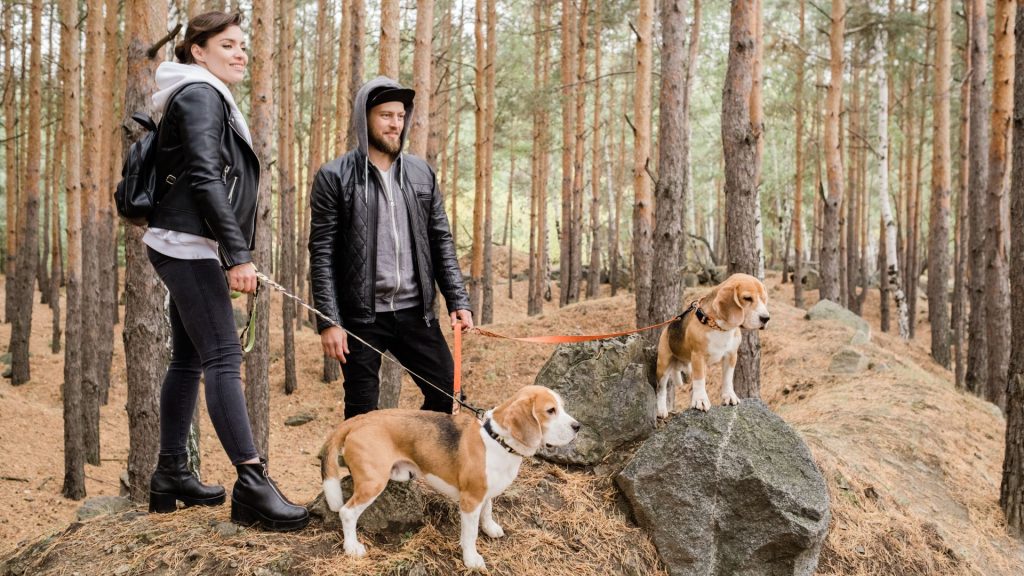
Physical Characteristics
Harriers are medium-sized dogs, typically standing between 19 to 21 inches tall at the shoulder and weighing between 45 to 60 pounds. They have a strong, athletic build, ideal for endurance and speed. Their coat is short and dense, providing protection in various weather conditions. Coat colors commonly include black, white, tan, and any combination of these. Harriers have expressive eyes and long, floppy ears that contribute to their keen sense of smell.
Temperament
Harriers are known for their friendly and outgoing nature. They are pack-oriented dogs, making them social and good with other dogs. Their high energy levels require regular exercise and mental stimulation. They are intelligent and curious, often displaying a strong prey drive due to their hunting background. While they are affectionate with family members, their independent nature can sometimes make training a bit challenging. Consistent and positive reinforcement methods work best.
Health and Lifespan
Harriers are generally healthy dogs but can be prone to certain health issues like hip dysplasia and ear infections. Regular vet check-ups and maintaining a healthy weight are crucial. The average lifespan of a Harrier is around 12 to 15 years. With proper care, they can live a long and active life.
Care and Grooming Needs
Harriers have relatively low grooming needs. Their short coat requires regular brushing to remove loose hair and maintain a healthy shine. Bathing is needed only occasionally. Due to their high energy, Harriers need plenty of exercise, including daily walks, runs, and playtime. They thrive in active households and enjoy participating in dog sports. Regular ear cleaning is essential to prevent infections. Harriers do best in environments where they can engage in activities that challenge their mind and body.
Hovawart
The Hovawart is an ancient German breed, dating back to the Middle Ages. They were originally used as guard dogs for farms and estates, valued for their protective instincts and loyalty. The name “Hovawart” translates to “estate guard,” reflecting their primary role. The breed almost became extinct in the early 20th century but was revived through dedicated breeding programs that emphasized their working abilities and temperamental traits.

Physical Characteristics
Hovawarts are large, powerful dogs, standing between 23 to 28 inches tall and weighing 65 to 90 pounds. They have a robust and well-muscled build, with a long, dense coat that can be black, black and tan, or blonde. Their expressive eyes and intelligent, alert expression are distinctive features. The breed’s coat provides protection in various weather conditions, making them well-suited for outdoor work.
Temperament
Hovawarts are known for their strong protective instincts and loyalty to their families. They are intelligent, confident, and can be independent thinkers. Early socialization and training are essential to harness their protective nature positively. Hovawarts are affectionate with their families and can be good with children, although their size and strength require supervision. They are naturally wary of strangers but should not be aggressive if well-trained and socialized.
Health and Lifespan
Hovawarts are generally healthy dogs but can be prone to certain conditions like hip dysplasia and thyroid issues. Regular veterinary check-ups and a balanced diet are important for maintaining their health. The breed typically has a lifespan of 10 to 14 years. Responsible breeding practices and proper care can help mitigate health risks.
Care and Grooming Needs
Hovawarts have moderate grooming needs. Their long coat requires regular brushing to prevent matting and reduce shedding. Bathing is needed occasionally, depending on their activity level and environment. Due to their working dog background, Hovawarts need plenty of physical and mental exercise. Daily walks, runs, and interactive play are essential. They excel in activities like obedience, tracking, and search and rescue. Hovawarts thrive in homes where they have a job to do and are part of an active family.
Hokkaido
The Hokkaido breed originated in Japan and is one of the country’s oldest native dog breeds. It was named after the Hokkaido prefecture, where it was primarily developed. The breed’s history dates back over 1,000 years, with roots tied to the Ainu people, who used these dogs for hunting large game, such as bears and deer. The Hokkaido’s resilience and adaptability made it a vital companion in Japan’s harsh, northern climates.
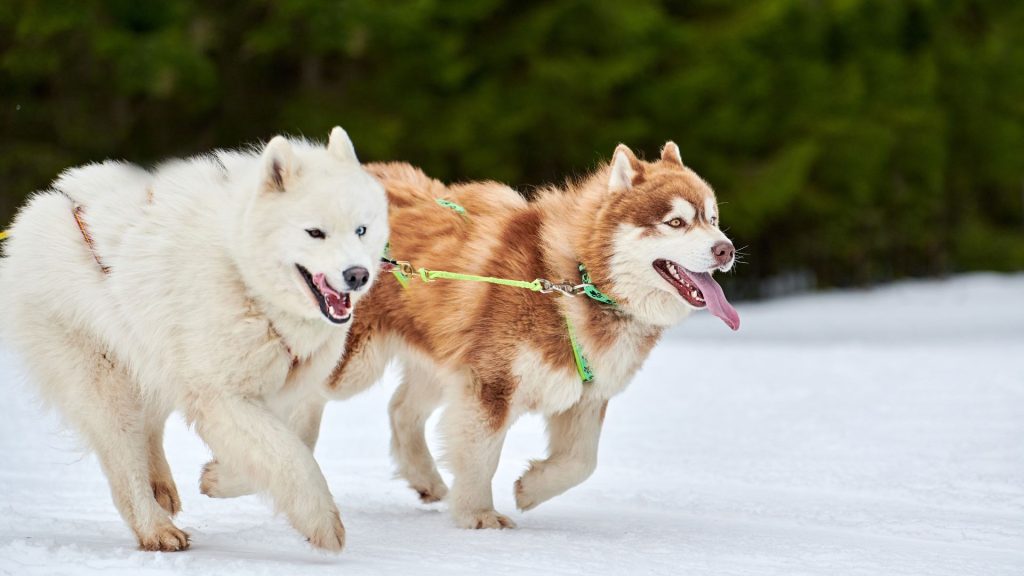
Physical Characteristics
Hokkaidos are medium-sized dogs, typically standing between 18 to 22 inches tall and weighing 45 to 65 pounds. They have a robust, muscular build and a double coat that is thick and weather-resistant. Coat colors include white, red, black, brindle, sesame, and wolf gray. Hokkaidos have a distinct appearance with erect ears, a curled tail, and a keen, alert expression. Their sturdy frame and thick coat make them well-suited for cold weather and rugged terrains.
Temperament
Hokkaidos are known for their loyalty, bravery, and strong protective instincts. They are intelligent and highly trainable but can also be independent and strong-willed. Early socialization and consistent training are crucial to harness their natural guarding tendencies. Hokkaidos are affectionate with their families and can be good with children, although their high energy levels require active engagement. They are naturally wary of strangers and make excellent watchdogs.
Health and Lifespan
Hokkaidos are generally healthy dogs, with a lifespan of around 12 to 15 years. However, like all breeds, they can be prone to certain health issues, such as hip dysplasia and luxating patella. Regular veterinary check-ups, a balanced diet, and maintaining a healthy weight are essential for their well-being. Genetic testing and responsible breeding practices can help minimize health risks.
Care and Grooming Needs
Hokkaidos require moderate grooming due to their thick double coat. Regular brushing, especially during shedding seasons, helps manage loose hair and prevents matting. Bathing should be done as needed, depending on their activity level and environment. As a high-energy breed, Hokkaidos need plenty of physical and mental exercise. Daily walks, runs, and interactive play sessions are essential to keep them happy and healthy. They excel in activities like agility, obedience, and tracking. Hokkaidos thrive in active households where they can participate in various activities and enjoy a strong bond with their owners.
Hungarian Vizsla
The Hungarian Vizsla, also known as the Magyar Vizsla, has a history that dates back several centuries. Originating in Hungary, this breed was developed by the Magyar tribes who used them as versatile hunting dogs. They were prized for their ability to point and retrieve game, making them invaluable companions for hunters. The Vizsla’s history is closely tied to Hungarian nobility, who played a significant role in refining the breed.
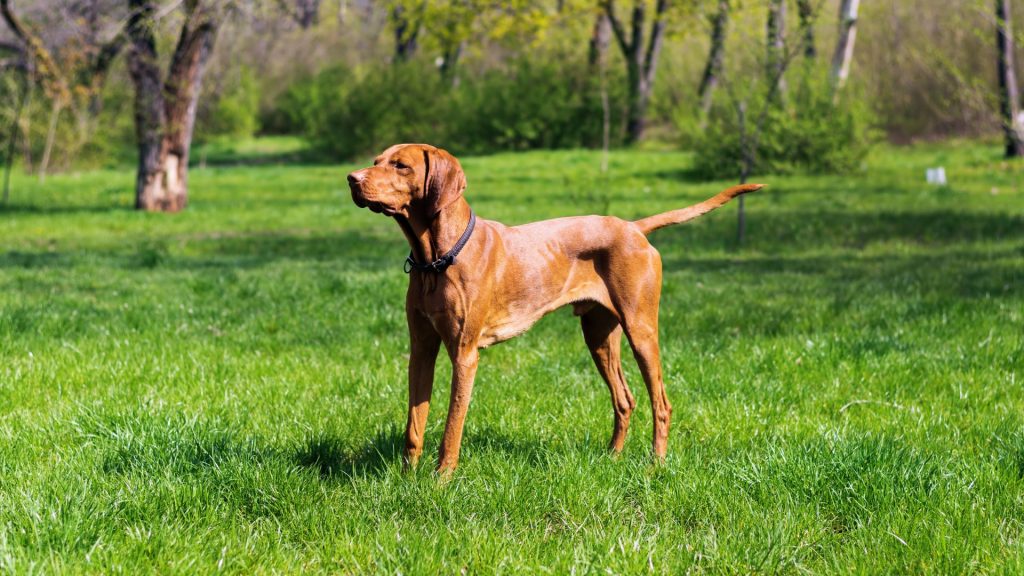
Physical Characteristics
Hungarian Vizslas are medium-sized dogs, standing between 21 to 24 inches tall and weighing 45 to 65 pounds. They have a sleek, athletic build with a short, dense coat that is usually a golden rust color. Their eyes and nose typically match the coat color, giving them a harmonious appearance. The Vizsla’s body is well-proportioned, showcasing their agility and endurance. Their ears are long and floppy, and their tails are typically docked to about two-thirds of their original length.
Temperament
Vizslas are known for their affectionate and energetic nature. They are highly social dogs that form strong bonds with their families. This breed is often referred to as “Velcro dogs” because they love to stay close to their owners. Vizslas are intelligent and eager to please, making them highly trainable. However, they can also be sensitive, so positive reinforcement is crucial during training. They are great with children and generally good with other dogs, making them excellent family pets.
Health and Lifespan
Hungarian Vizslas are generally healthy dogs with a lifespan of 12 to 15 years. However, they can be prone to certain health issues, such as hip dysplasia, epilepsy, and eye disorders. Regular veterinary check-ups and a balanced diet are essential for maintaining their health. Ensuring they have regular exercise can also help prevent obesity, which can exacerbate health problems.
Care and Grooming Needs
Vizslas have low grooming needs due to their short coat. Regular brushing helps to remove loose hair and keep their coat shiny. Bathing is required occasionally, depending on their activity level. As a high-energy breed, Vizslas need plenty of exercise. Daily walks, runs, and play sessions are essential to keep them physically and mentally stimulated. They thrive in active households and enjoy participating in activities like hiking, running, and dog sports. Mental stimulation through training and interactive toys is also important to prevent boredom. Vizslas are best suited for families who can provide ample attention and exercise.
How to Choose the Right Breed for You
When choosing a dog breed, it’s essential to consider your lifestyle and family dynamics. Different breeds have varying needs and characteristics that can significantly impact how well they fit into your home. For example, Havanese dogs are small and adaptable, making them great for families living in apartments or smaller homes. On the other hand, a breed like the Harrier, with its high energy and need for outdoor activities, might be better suited for families with larger homes and yards. The Hovawart and Hokkaido, with their protective instincts, can be ideal for those seeking a loyal guardian, while the affectionate Hungarian Vizsla is perfect for active families who enjoy outdoor adventures.
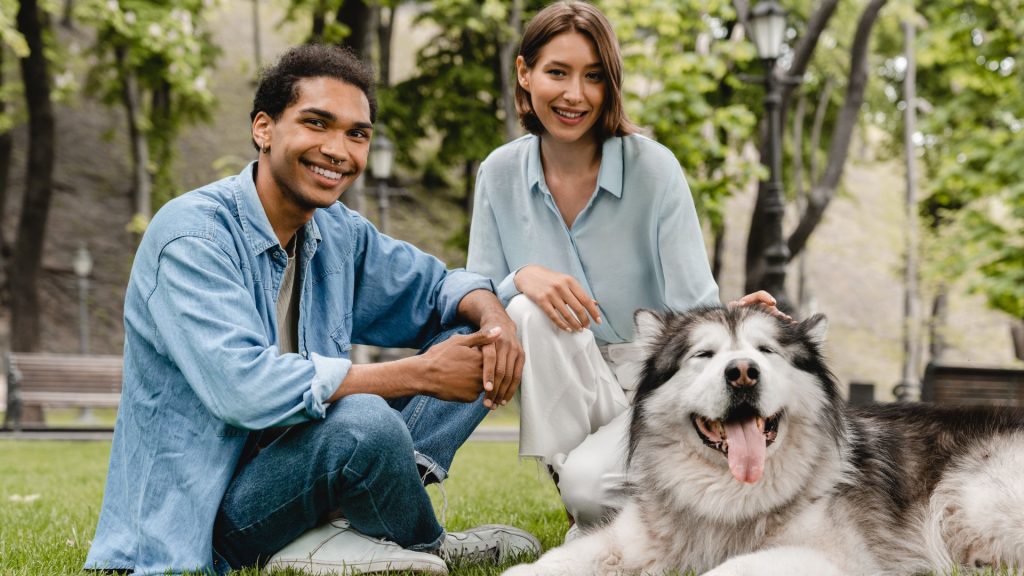
Activity Levels
Matching a dog’s energy level with your own is crucial for a happy and healthy relationship. High-energy breeds like the Harrier and Vizsla need plenty of physical and mental stimulation. These breeds thrive in active households where they can engage in regular exercise, such as running, hiking, or participating in dog sports. Conversely, if you prefer a more relaxed lifestyle, a breed like the Havanese, which requires less intense exercise, might be a better fit. Understanding and meeting your dog’s activity needs will help prevent behavioral issues and ensure they remain happy and well-adjusted.
Space and Living Conditions
The size of your living space is another important factor to consider. Small breeds like the Havanese can adapt well to apartment living as long as they receive enough exercise and mental stimulation. However, larger breeds like the Hovawart or the high-energy Harrier may require more space to roam and play. Homes with yards are ideal for these breeds, providing them with the opportunity to expend their energy. Additionally, consider the noise level and potential for barking, as some breeds may not be well-suited for close-quarters living. Ensuring your living conditions match your dog’s needs will contribute to a harmonious and fulfilling relationship.
Tips for New Dog Owners
Preparing your home for a new dog involves creating a safe and welcoming environment. Start by removing any hazardous items within your dog’s reach, such as toxic plants, chemicals, or small objects that could be swallowed. Set up a comfortable space with a bed, toys, and food and water bowls. Ensure the area is quiet and secure, allowing your new dog to adjust comfortably. Stock up on essential supplies like food, grooming tools, and a crate for training and safe transportation.
Training and Socialization
Training and socialization are crucial for a well-behaved and confident dog. Begin with basic commands like sit, stay, and come. Use positive reinforcement techniques, such as treats and praise, to encourage good behavior. Consistency is key, so practice commands regularly and be patient. Socialization involves exposing your dog to different people, animals, and environments to build their confidence and reduce fear. Take your dog on walks, to parks, and introduce them to other dogs in controlled settings. Early socialization helps prevent behavioral issues and ensures your dog grows up to be well-adjusted.
Health Care
Initial health care steps are vital for your dog’s well-being. Schedule a vet appointment soon after bringing your dog home for a thorough health check and vaccinations. Discuss a suitable diet, preventive treatments for fleas, ticks, and worms, and a vaccination schedule. Regular vet visits help monitor your dog’s health and address any concerns early. Finding a good vet is essential; seek recommendations from friends, family, or local pet owners. A trusted vet will provide valuable guidance and support throughout your dog’s life. Maintaining a routine for grooming, dental care, and exercise will also contribute to your dog’s overall health and happiness.

Conclusion
In this article, we explored dog breeds starting with “H,” including the Havanese, Harrier, Hovawart, Hokkaido, and Hungarian Vizsla. Each breed has unique traits, from their history and physical characteristics to temperament, health, and care needs. We also discussed how to choose the right breed based on lifestyle, activity levels, and living conditions, and offered tips for new dog owners on preparation, training, and health care.
Choosing the right breed takes time and research. Share your experiences or ask questions in the comments below. Your insights can help others find their perfect pup. Let’s build a supportive community together!

Hello, I’m Donna Carter, the founder and writer behind PetFleck.com. My journey with dogs started years ago, and it’s been a passion that has only grown stronger over time. I’ve always been fascinated by the unique behaviors and characteristics of different dog breeds, and this curiosity has led me to dive deep into the world of canine studies.
My love for dogs is the driving force behind everything I do. I’ve dedicated countless hours to researching and understanding the nuances of dog care, training, and breed-specific traits. This dedication helps me create content that is not only informative but also genuinely helpful for fellow dog lovers and owners.
At PetFleck, I combine my extensive knowledge and hands-on experience with my passion for dogs to provide valuable insights and tips. Whether it’s exploring different breeds or offering practical advice on dog care, I aim to share knowledge that makes a real difference in the lives of dogs and their families.
I’m thrilled to share my love for dogs with you through my writing. I hope my articles inspire and inform, helping you to better understand and appreciate the incredible bond we share with our furry friends.
Thank you for visiting PetFleck.com, and I look forward to connecting with you through our shared love of dogs!
